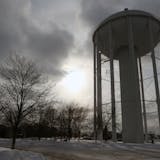Transit plans for Cedar Avenue may not have the high profile of the light rail and commuter rail projects across the metro area, but early ridership projections show the bus rapid transit line keeping up with or even exceeding the expectations of transit corridors with bigger names and price tags.
Already, the bus service on Cedar counts 4,800 trips per day, about half of them on express buses and half on local routes. That's more than the 3,400 daily rides anticipated for the Northstar Line, connecting Big Lake to Minneapolis, this year.
By 2012, when the region's first major bus rapid transit corridor is complete, the Cedar Avenue buses will be running in dedicated shoulder lanes, and service from station to station between Lakeville and Bloomington will be added, providing 7,900 rides daily.
If estimates hold true through 2030, Cedar Avenue bus rapid transit will be up to 18,000 to 20,000 trips per day. The Central Corridor light rail line from Minneapolis to St. Paul, by comparison, is expected to carry more than 40,000 trips daily, and the Southwest line from Minneapolis to the southwestern suburbs will see about 28,700 daily.
"It maybe hasn't gotten as much attention as the rail projects, but I think it's very significant and going to carry a lot of passengers when the full system is completed," said Lee Munnich, a senior fellow at the Humphrey Institute of Public Affairs at the University of Minnesota.
And, as its advocates are quick to note, the entire Cedar Avenue project -- road construction, buses and stations -- will cost about one-fourth as much as either of the new light rail lines. Cedar Avenue's pricetag for full build-out through 2030 is $250 million. The Central Corridor is estimated at $957 million and the Southwest line at about $1.2 billion.
That combination of high ridership and lower capital cost might set a new standard -- if people hop on the buses as often as the projections suggest.
"This will provide us with the first model," Munnich said. He predicted that Cedar BRT will change people's perception of bus systems as unreliable or confusing. "Once people see it work, I think there will be demand for that type of service."


